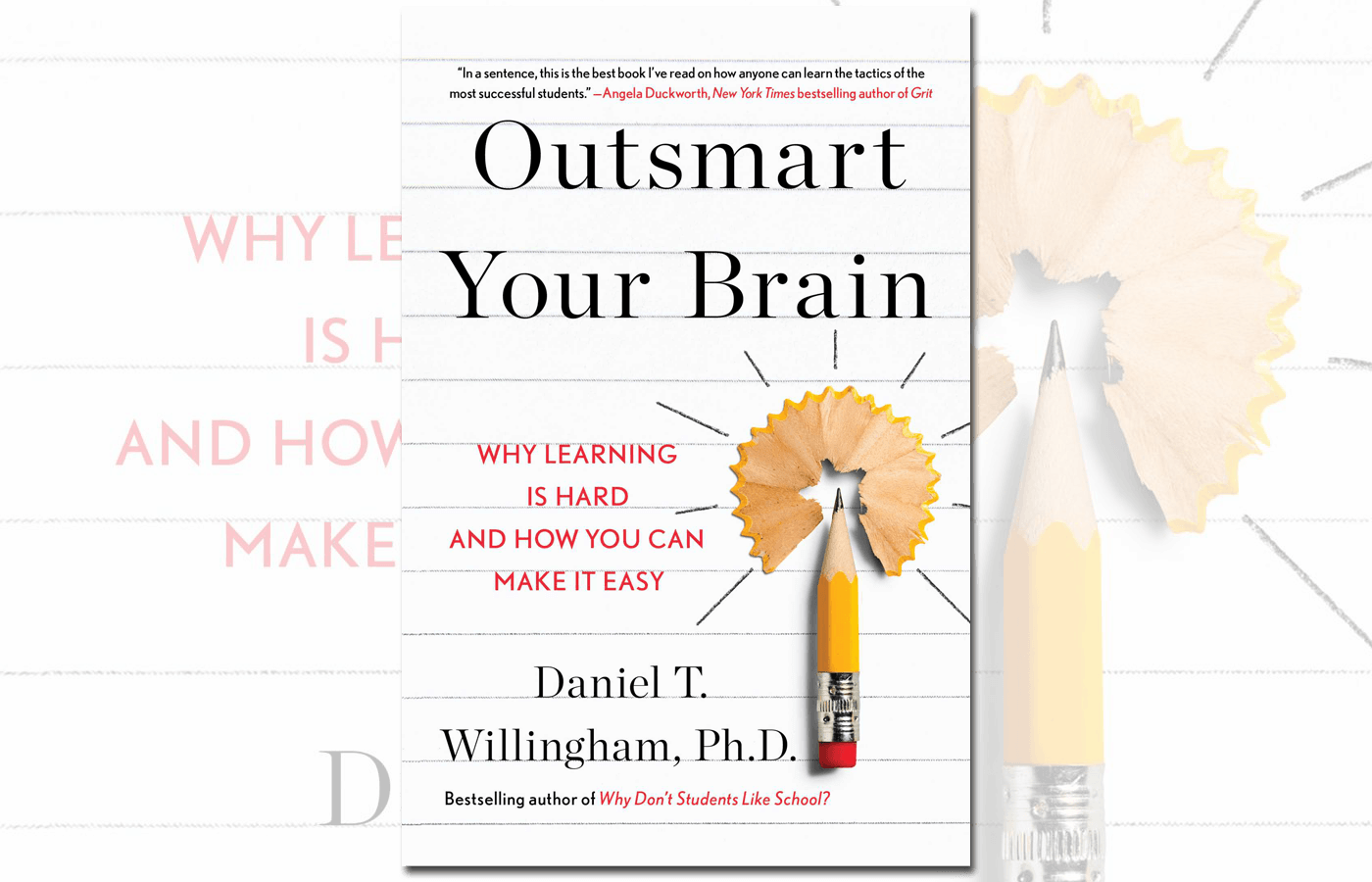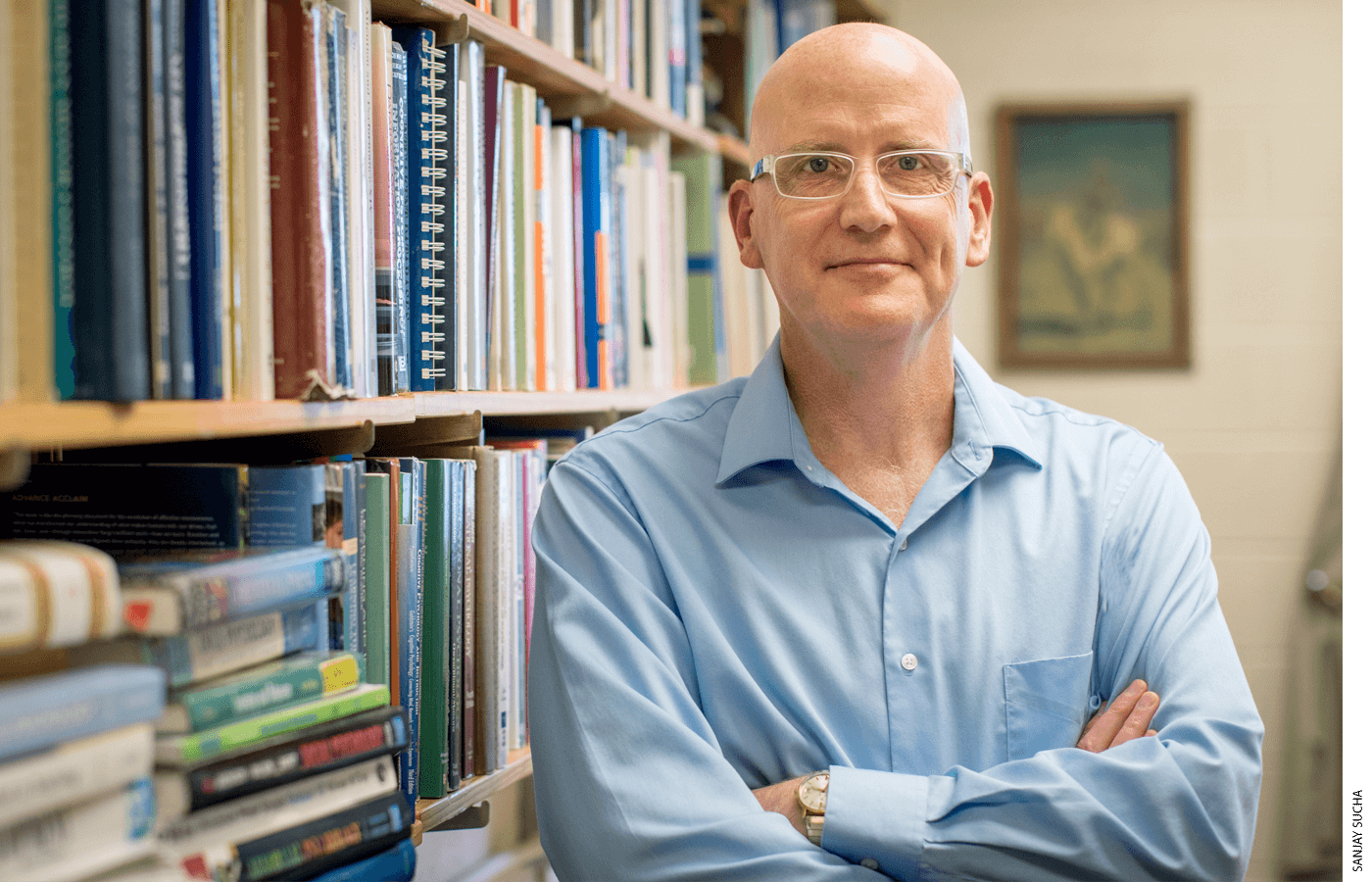
Outsmart Your Brain: Why Learning Is Hard and How You Can Make It Easy
by Daniel T. Willingham
Gallery Books, 2023, $28.99; 336 pages.
As reviewed by Stephen M. Kosslyn
In Outsmart Your Brain, Daniel Willingham has written three useful books in one, seamlessly integrated and mutually reinforcing. The book in the foreground offers a series of tips and advice to help students learn effectively and, more generally, navigate the school experience. One of the books in the background provides a review of research findings in cognitive science that buttress his tips and advice. The other gives advice to instructors on how to help students make the most of the suggestions.
Each of the book’s 14 chapters begins with a brief overview followed by a box containing two sections, one labeled “What Your Brain Will Do” (that is, what your default behavior will probably be) and the other “How to Outsmart Your Brain” (that is, how to avoid falling into the default-behavior trap). Willingham then unpacks the “How to Outsmart Your Brain” idea with a series of numbered tips (the book offers a total of 94). He describes most of these tips in a page or two and concludes each with a one-sentence summary. At the end of each chapter is a section for instructors, which itself ends with a brief summary of the main points in that section. The chapters not only cover bread-and-butter topics—such as how to understand a lecture or a difficult book, how to take notes, and how to study for and take an exam—but also offer useful tips on life skills, such as how to avoid procrastination, stay focused, and cope with anxiety.
The book is chock-full of useful, specific, and concrete advice that will help students of all stripes, from high school through graduate school. No learning stone has been left unturned, and I would venture to say that there’s something here for everyone. The writing is clear and compelling, with a warm and inviting tone. Moreover, the numerous analogies, brief demonstrations, clear explanations, and wise reflections serve to bolster the author’s points. For example, he points out that the brain evolved to function in everyday conversation, which is not organized hierarchically, and thus if you just relax and do what comes naturally while listening to lectures (which are typically organized hierarchically), you will often fail to mentally organize and understand the content. Similarly, he notes that memory is the residue of thought, and thus thinking is a crucial part of learning—even while you are listening to a lecture. In spite of the humility that he often expresses in the book, Dan Willingham was an impressive grad student when I was one of his teachers, and he has clearly grown even more capable with the passage of time.
No book is perfect, of course, and this excellent book is no exception. My main critique is that, in many cases, carrying out Willingham’s advice would require a lot of work. As I read, I jotted a “W” in the margin whenever I thought the extent of this work might discourage students from actually following the advice; I made 109 such notations. The author readily acknowledges that the student will have to put in some work to follow his advice, and he makes a good case that the investment in time and energy will ultimately be worth it. Unfortunately, we humans are prone to “temporal discounting”—we tend to discount future rewards as compared to current efforts. Thus, the sheer amount of work required may hinder students from drawing full value from this book.
Aside from this workload, students will have to contend with another hurdle, which I’ll call “meta-cognitive load”—how difficult it is to keep the material in mind, recognize later when it’s relevant, and then see how to apply it appropriately.
I think the most effective tips and advice will be those that don’t require too much effort to execute and that have low meta-cognitive load (for example, Tip 4: advice on when it’s better to do assigned readings before vs. after a lecture; Tip 39: do not cram; Tip 63: how to use a calendar effectively; Tip 76: choose your work location with care). Tips such as these offer relatively simple, straightforward advice that can be followed immediately.

However, much of the book’s advice requires considerable work to execute (for example, Tips 1 and 21: analyze a lecture into a hierarchical structure; Tip 17: master a six-step process to learn general skills; Tip 28: write a summary and about three statements for each of a book’s headings; Tip 56: categorize mistakes made on an exam; Tip 32: create an encyclopedic study guide that includes absolutely everything you need to know). Similarly, many tips entail high meta-cognitive load (Tip 47: when taking an exam, remember to engage in a four-step process to get oriented and check your work; Tip 55: remember to follow three specific steps when writing essay exams; Tip 70: when you are about to procrastinate, reframe the choice to highlight the opportunity cost and focus on the least aversive part of the task; and Tip 92: if you know you will be doing something that will make you anxious, use a specific three-step process a day or two beforehand).
The book’s subtitle—“Why Learning Is Hard and How You Can Make It Easy”—is not quite apt. Willingham certainly makes it clear why learning is hard, but it’s a bit of a stretch to say that he shows how to make learning easy, as he acknowledges at the end of the introduction and at various points throughout
the book.
To use all of the advice in this book, the reader would need to be highly motivated to learn, have a lot of energy, be very organized and focused, and have a lot of time. For example, the author recommends that students meet with a study group to discuss what will probably be on the exam, then create encyclopedic individual study guides, then meet again (perhaps 48 hours before an exam) to quiz each other (Tip 38); this is no doubt a good idea but not realistic for many students. In fact, most college students today are not “traditional”—they need to work, or they have other responsibilities that prevent them from devoting the time to, say, preparing the kind of study guide that is recommended here (Tip 32). Willingham knows this and, at the outset, suggests that students pick and choose which chapters to read, try out tips to see whether they work well for them, and try another one if they don’t.
The author is clearly aware that he is asking a lot of students, and he has tried to help in various ways—for example, by putting key phrases or sentences in boldface and including the one-sentence summaries. However, there is some tension between these devices and some of the advice offered. For instance, providing bolded terms may reduce the need for the student to think through the material to decide what’s important, and such thinking is known to enhance learning (Tips 3, 13, and 33); and putting terms in boldface can actually undermine learning if students use that material as a substitute for doing the reading (Tip 29).
Most of the tips and advice sit on a solid foundation of research, and, to Willingham’s credit, he tells the reader when his guidance is based on intuition or personal experience rather than empirical data. Each chapter has its own list of references at the end of the book, but it isn’t always clear which references support which points in the chapter. The author probably made the right call in not using standard academic references, which would have undercut the flow and the friendly tone, and footnotes would have injected an unwanted sense of formality. However, it would have been helpful if the citations had included the page number and a brief phrase from the text to anchor specific references.
What to make of all of this? At the outset of this review, I observed that Willingham has written three books in one. The book in the foreground, tips and advice for students, is probably most useful (as Willingham suggests) for students who are highly motivated to do better in school and need to identify a few techniques to help them improve. The book in the background that reviews research findings is superb and should be read by anyone interested in applications of cognitive science. And finally, the advice to instructors on how to help students make the most of the suggestions was sometimes too abbreviated to be very useful. However, that said, instructors can easily use the tips and advice as a springboard to improve their own teaching—and, crucially, to enhance student learning.
Stephen M. Kosslyn is president and CEO of Active Learning Sciences, Inc., chief academic officer of Foundry College, and John Lindsley Professor of Psychology Emeritus at Harvard University.
This article appeared in the Winter 2023 issue of Education Next. Suggested citation format:
Kosslyn, S.M. (2023). Tip 39: Don’t Cram: And other techniques for successful learning. Education Next, 23(1), 78-80.


